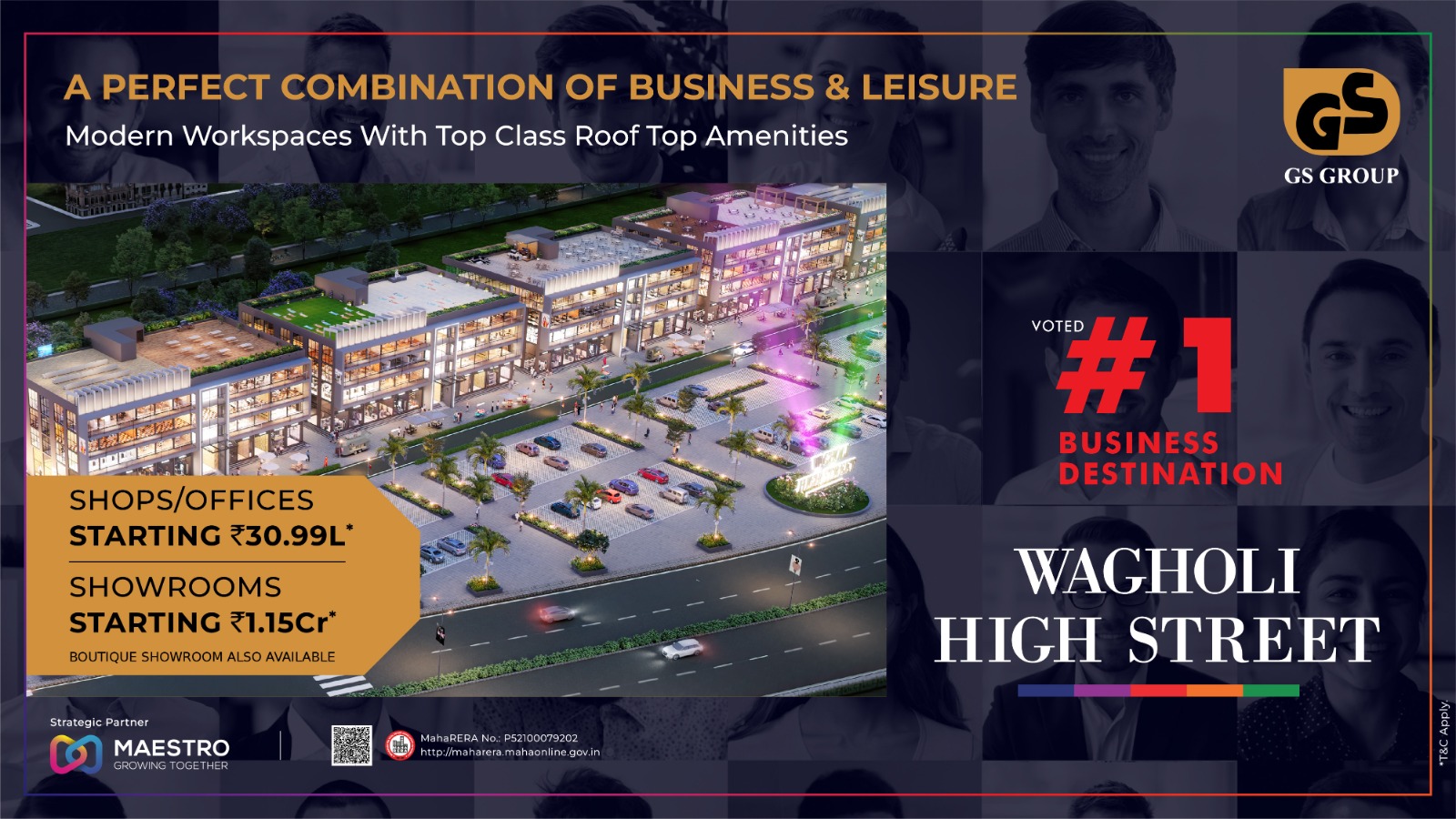
- September 4, 2025
Pune Metro’s Aqua Line is expanding from Vanaz to Chandani Chowk and Ramwadi to Wagholi, a 12.75 km all-elevated addition with 13 stations that will materially lift Wagholi’s residential and commercial market depth—and GS Developers’ Wagholi High Street is positioned as a signature, metro-ready beneficiary.
What’s approved?
- Two extensions under Phase-2: Vanaz–Chandani Chowk (about 1.1–1.5 km; 2 stations: Kothrud Bus Depot and Chandani Chowk) and Ramwadi–Wagholi (about 11–12 km; 11 stations including Viman Nagar, Kharadi Bypass, Ubale Nagar, Wagholi, Bakori Phata, and Vitthalwadi).
- State approval on March 11, 2024 via the DPR; Union Cabinet approval on June 24–25, 2025 with a four-year completion intent as an extension of the operational Aqua Line.
- Cost references: ₹3,756.58 crore cited in the DPR context; ₹3,626.24 crore in the Cabinet note with funding via Centre, State, and external agencies.
Why Wagholi benefits most?
Direct metro access along Nagar Road compresses commute times to Viman Nagar, Kalyani Nagar, and Kharadi, unlocking larger home choice sets and deepening retail/office catchments.
Station influence zones typically trigger land use intensification: ground-floor retail, F&B, clinics, and neighbourhood offices cluster within 1-2 Km, accelerating price discovery and leasing.
The transit value curve
- Anticipation phase: values start repricing post-approval as developers and buyers discount future access; Wagholi is here today with defined station nodes in the DPR.
- Construction phase: confidence builds with visible progress; leasing pre-commitments in retail and flex offices increase around station sites.
- Post-operation phase: stable premiums and stronger rental absorption once services start; Viman Nagar’s experience post-Ramwadi opening offers the benchmark
Residential impact eastward
Expect step-ups first around Ubale Nagar, Upper Kharadi Road, Wagholi, Siddharth Nagar, and Bakori Phata stations as launches concentrate within walking and short-feeder radii.
Larger configurations gain traction as commute certainty rises, with absorption assisted by the IT corridor’s tenant base and airport/office linkages.
Commercial impact on Nagar Road belt
High-street retail, QSR, banking, diagnostics, and daily-needs formats expand where pedestrian flows intersect feeder roads; boutique offices and co-working fill gaps in Grade-B/B+ supply.
Kharadi Bypass and Viman Nagar nodes extend spillover demand east, improving viability for secondary hubs in Wagholi and Kesnand.
GS Developers' presence in Wagholi
GS Developers (GS Group) maintains a strong eastern-corridor focus tied to metro, Ring Road, and IT-cluster connectivity, underscoring a long-term commitment to Wagholi.
Communications emphasize “integrated urban hubs” with multi-modal access, aligned to the anticipated metro-driven footfall and trade potential along Nagar Road.
More about Wagholi High Street
- Project: Wagholi High Street, a 5.5-acre commercial high-street with five low-rise towers offering shops, showrooms, and offices along the Wagholi–Kesnand belt.
- Compliance and timeline: RERA-registered Building C (P52100079202) with possession timelines aligning to the metro’s four-year delivery intent, positioning the asset to capture post-commissioning demand.
- Connectivity stack: designed around the upcoming Ramwadi–Wagholi Metro extension, Ring Road, 120-ft Link Road, and proximity to EON IT Park and World Trade Centre, creating strong commuter and destination footfall.
- Market signals: brand onboarding and active retail communication (including national QSR traction) indicate occupier confidence in catchment depth.
How to position Wagholi now
- Buyer strategy: prioritize projects within 1-2 Km of DPR-listed stations to balance price entry and walkability, with multi-family typologies historically capturing greater transit premiums.
- Investor strategy: blend yield and growth—acquire near future station nodes and ring road accessibility in Wagholi for appreciation, hold income assets closer to Kharadi Bypass/Viman Nagar for rent velocity and resilience.
Risks and mitigants
- Execution timelines: metro and utility relocations can shift commissioning; anchor investments should be phased, with buffers against possession drift.
- Last-mile readiness: parking, feeder routes, and on-ground circulation must scale with station activation; assets fronting Link Roads and wider cross-sections are better insulated.
Read More
Wagholi High Street Unveils “Deals Ka Tyohar”
Celebrate business growth at Wagholi High Street with GS Group’s...
Read MoreWagholi–Kesnand to Purandar Airport via Ring Road
Discover how the Pune Ring Road connects Wagholi–Kesnand to Purandar...
Read MoreEssential Tips for First-Time Homebuyers
Essential Tips for First-Time Homebuyers Are you a first-time homebuyer?...
Read More

